Artists featured in the monthly Member Spotlight are selected from our online Members' Gallery. If you wish to be considered for the Spotlight in the future, send us a note!
Ron Cooper
Member Spotlight - November 2020

- Where did you grow up, and where do you live now?
I was born in Boston and grew up in western New York state, near Niagara Falls. I now live in Denver where we've been for over 20 years. In between, we did stints in various parts of New England, northern California and Los Angeles. I worked in corporate America for over 30 years, hence the many relocations.
- Why did you join TPS, and how long have you been involved?
I initially became aware of TPS as a result of entering TPS 28: The International Competition and having two of my photographs accepted for exhibition. I've since become more familiar with the additional ways TPS supports, celebrates and promotes photographers and photography. I've used and enjoyed the website, the Members' Gallery, the E-Zine, the exhibition catalogs -- all of high quality and easily accessible.
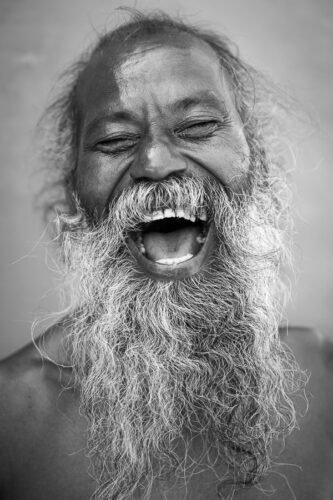
- Why did you become a photographer? / What do you like about photography?
About 12 years ago, I was between corporate jobs and took advantage of the time off to do some international travel. A friend gave me a digital camera and I started playing with it, documenting much of what I saw in my travels. I was shooting landscapes, architecture, urban and street scenes, even a few people images (though I was reluctant to approach them).
Over time, my interests evolved and I realized that my greatest interests in both travel and photography were culture and people. I gradually got more comfortable approaching people I saw in my travels, introducing myself and asking their permission to make their portrait. It started slowly, but gathered momentum over a couple of years.
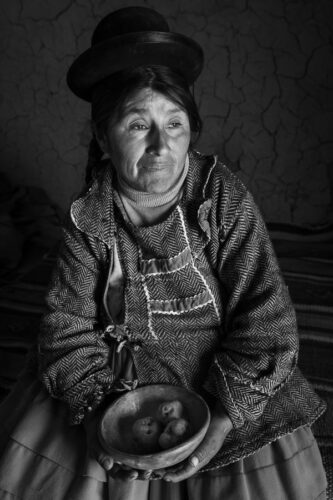
Now various forms of people photography are my entire photographic practice. I find that by combining photography and travel I "see" much more of a place or culture because I move more slowly and deliberately. By engaging with local people, I meet and learn about local cultures, traditions, ways of life. I'm genuinely interested in people and my portrait practice is a great "excuse" for introducing myself to people who I would, in almost any other circumstance, never meet.

Many of these encounters are in sign language -- or though a local driver, guide, the occasional "fixer" or even a child who might speak some English -- but I've generally found that I can make myself clear and most people I approach understand my requests. I'm still surprised by how many people say yes and then how they really get engaged in our photo session. I also run into people who are skeptical, asking why I want to make their portrait. I try to explain and, depending on language and circumstance, have varying degrees of success.
I only photograph people who have given me their permission and who are actively engaged in our portrait-making. I don't approach people who are impaired or unable to participate, and I don't photograph people who decline my request. For me, it's a fundamental question of respect. I think the active engagement of the people I photograph is reflected in the images themselves.

- Where or from whom do you find inspiration or motivation for your work? / Do you have a mentor?
I've built a great personal library of photography books and love to study the images and techniques of other portrait photographers. I'm inspired by the great classic portraitists of the 20th century including Yousuf Karsh, Richard Avedon, Irving Penn and Arnold Newman. I love the work of "humanitarian" photographers like Allison Wright and Sebastião Salgado.
I also find inspiration in the work of contemporary artists like Christine Turnauer, Robert Osbourn, Platon, William Coupon and Gregory Heisler. I don't have a "mentor" per se, but I've benefitted greatly from workshops and one-on-one sessions with superb photographers and teachers like Nat Coalson, Jonny Edward and Craig Varjebedian.
- How would you describe your working process?
See above. And, importantly... one of the challenges associated with doing the type of photography that I do, especially in the developing world (non-western, often non-white), is maintaining a heightened awareness of the power dynamic between me -- a white western photographer ("of privilege" as some would characterize it) -- and the local, indigenous, ethnic and other people I meet and photograph. Historically, that power dynamic has not always been a good thing. It has led to images that exploit or stereotype ethnic or indigenous people.
One of the real risks is to frame or represent subjects who look or dress differently in a way that exploits their "otherness" and not their fundamental humanity and individuality. I try to maintain my awareness, always engage respectfully, and seek to represent portrait subjects as individuals, not necessarily as representative of their particular community, ethnic or indigenous group.
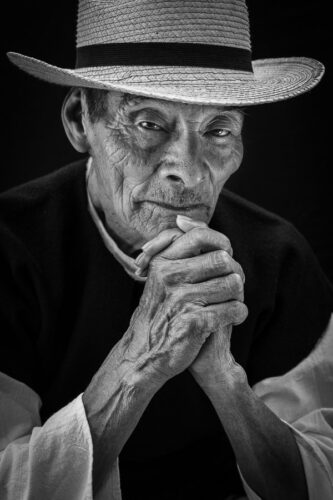
Gaining my subject's permission and engagement is essential. I don't rush and I explain upfront that our session will involve a number of pictures and will take a bit of time. I often use a tripod as that, for me, creates a more deliberate (and slower) process. I often ask subjects to move to a location with better light or a less distracting background. I love window and doorway light, and getting a subject to pose in their home is often a great way to capture an interesting environment and a place where the subject is likely to be comfortable.
As I'm shooting, I often share the image on my LCD screen with the subject. I usually have the camera set to display the screen image in black and white, and subjects are often surprised to see the image in monochrome and many seem to like it presented that way.
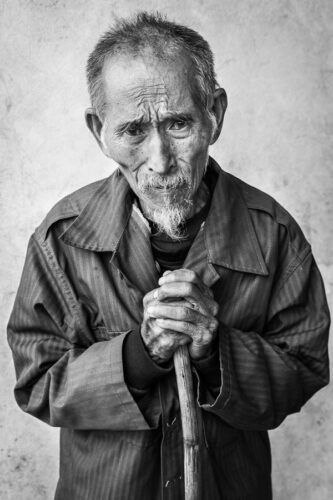
- What do you look for in a subject or what do you want to achieve with the portrait?
I look for people who attract my attention because of their appearance, attire, pride, manner, behavior..... I gravitate to older people, especially those with a lot of character and wisdom in their faces. I also find that, in many instances, older people are less self-conscious about their appearance and willing to more actively engage.
Above all else, I want the portrait to be genuine -- and that can take many different forms. I think in my best images, subjects are, and look to be, engaged, active participants in making the portrait. They're comfortable with me and, most importantly, comfortable sharing something of themselves.

- What work are you most proud of?
I'm most proud of the portraits that successfully achieve the objectives noted above and, at the same time, are both visually compelling AND emotionally or intellectually engaging. Of course I have my favorites but I find it very difficult to edit my own work because I tend to recall the circumstances and emotions under which the image was made, and find it challenging to evaluate my own work purely on the basis of its visual appeal.
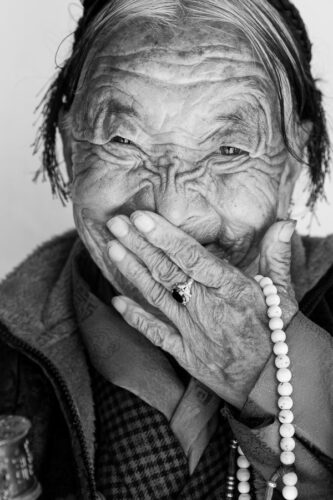
In deciding which images to submit for possible inclusion in shows and exhibits, I'll often seek the advice of those I trust to take a more objective view of the work. And while my work has been shown in almost 50 juried exhibits over the last number of years, I'm often terrible at predicting which images will most appeal to a juror, gallerist, collector or critic.
- Please tell us about your most recent photographic project or body of work.
Over the past two years, I've met and photographed over 100 elite professional Santa Clauses. I travelled to eight cities around the US and set up formal portrait sessions to capture these subjects first in street clothes (just as you'd see them at the local coffee shop, bank, grocery store -- no bells, no red suit), then in their full-on Santa Claus gear and persona.
Virtually all of these subjects have real beards and the classic Santa Claus physique so, even in monochrome, they resemble the jolly big guy. Many brought multiple suits to our session -- and many of the suits are custom-designed and handmade. I was amazed at how seriously these individuals take their responsibility to maintain the values and traditions we associate with Santa Claus. For many of them, it's not only a profession, it's a calling.

As the project progressed, I started thinking about how best to present this work and concluded that a book of "portraits and profiles" featuring "before" and "after" images would be great fun. I was fortunate to gain the interest of Princeton Architectural Press (PAPress.com), a boutique publisher of art, design and popular culture titles. They agreed to design, publish and distribute the book this year. It's called We Are Santa: Portraits & Profiles.
The official publication date was September 29 and it is available on Amazon, Barnes & Noble.com, Bookshop.org and at PAPress.com. Please go here for more information. I've done some self-publishing but this is my first commercially-published book. It's been an interesting and fun process and I'm excited to see how the book will be received.

- Any tips or words of advice for aspiring photographers?
My best advice is to do what you love. I'm in the very fortunate position of having retired from a corporate career so I'm able to pursue the type of image-making that I find personally compelling and rewarding without the very real and challenging requirement to make a living and to support my family as a professional photographer. I greatly admire and respect those artists who dedicate themselves to this pursuit and recognize that making great art and surviving financially is not at all simple or easy.